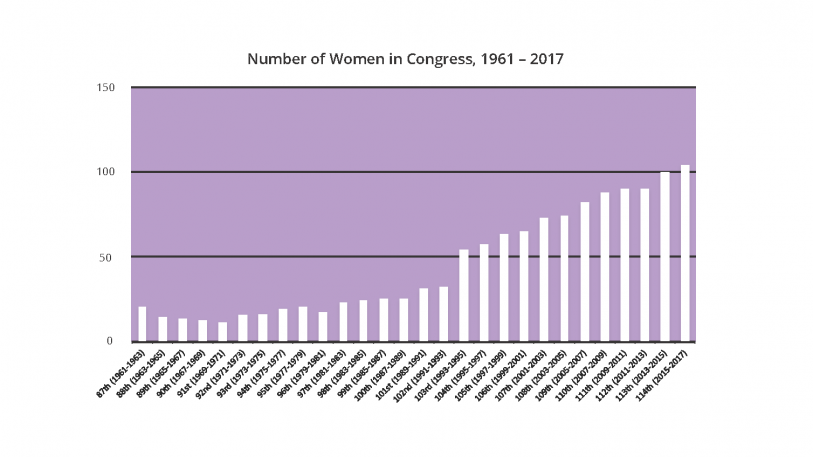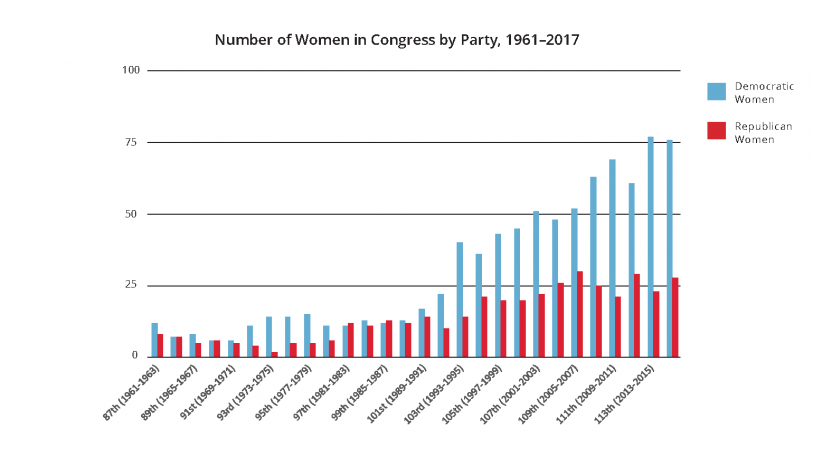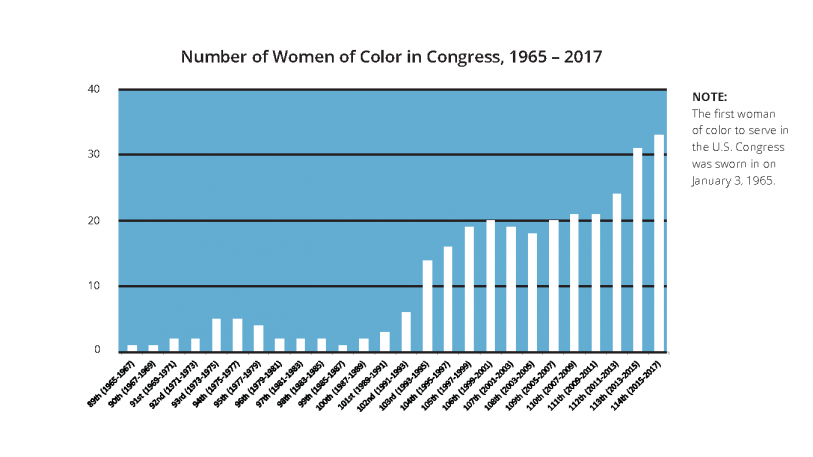As I’ve written recently, the world of venture capital isn’t the most welcoming for women. But it’s certainly not the only sector where they are woefully underrepresented: In the U.S. Congress, women currently account for less than 20% of its 535 members.
A new study by the Center for American Women and Politics (CAWP) at Rutgers delves into the representation of women in the 114th Congress (2015-2017), which saw 20 women in the Senate and 84 in the House. In conversations with many of them, the study’s authors found that half the battle for women was just getting their foot in the door.
“Almost all the women we interviewed want to see more women join them in the nation’s legislature, and many claim that the gender-related obstacles to getting to Congress are greater than the challenges women face once they are elected,” the study’s authors wrote.
 One disparity that the study highlights is the stark difference in representation between parties: There are three times more Democratic women in Congress than there are Republican women. Over the last 15 years, the number of Republican women in Congress has hovered at around 25, give or take a few. The contingent of Democratic women in Congress, on the other hand, has seen an increase of about 25 over the last 15 years, bringing the total to about 75.
One disparity that the study highlights is the stark difference in representation between parties: There are three times more Democratic women in Congress than there are Republican women. Over the last 15 years, the number of Republican women in Congress has hovered at around 25, give or take a few. The contingent of Democratic women in Congress, on the other hand, has seen an increase of about 25 over the last 15 years, bringing the total to about 75.
 The Democratic party attracts more women, so it is to be expected that Congress will reflect that—but what does seem surprising is that the number of Republican women in Congress has stagnated for so many years. After all, the breakdown of women in Congress doesn’t mirror the overall percentage of women in each party: According to a 2016 Pew study, about 54% of women identify as Democrats or lean Democratic, while 38% identify as Republican or lean Republican.
The Democratic party attracts more women, so it is to be expected that Congress will reflect that—but what does seem surprising is that the number of Republican women in Congress has stagnated for so many years. After all, the breakdown of women in Congress doesn’t mirror the overall percentage of women in each party: According to a 2016 Pew study, about 54% of women identify as Democrats or lean Democratic, while 38% identify as Republican or lean Republican.
In the 114th Congress, however, that ratio was closer to 73% Democratic, 27% Republican. Women in the Republican party have historically had less representation at all levels of government, including levels below Congress, which also explains why increasing representation in the Senate and House has been slow-going. (There are currently more Republican women in statewide executive positions than there are Democratic women, but that has only happened within the last few years.)
One reason for this, as the Washington Post noted recently, is that female Republicans tend to be more moderate and to the left of their male counterparts. In an analysis of campaign financing, the Post found that it is harder for moderates to garner support from donors, who usually prefer that candidates align their values with the party’s “dominant ideology”—liberal for Democrats and conservative for Republicans—which puts more moderate women at a disadvantage.
Female Democratic donors often throw their support behind female Democratic candidates, and female Democrats tend to get the majority of their funding from female donors, as a report by the Center for Responsive Politics found back in 2013. According to the Post‘s findings, the same isn’t necessarily true of female Republican donors, who focus more on ideology and don’t vote one way or the other based on gender.
“There is more support infrastructure—including things like PACs, training and recruitment organizations, and party initiatives for women—on the Democratic side than for Republican women,” Kelly Dittmar, one of the leaders of the CAWP study, told me.
But the number of Democratic women in Congress isn’t nearly as significant when removed from the context of Republican women in Congress. “Even for Democratic women, who have seen more steady gains at the congressional level, the increases have still been rather incremental,” Dittmar said.

That said, the increased number of Democratic women in Congress has also encompassed an increase in the number of women of color elected to the House and Senate. Over the past 20 years, the number of women of color in Congress has doubled: In the 114th Congress, there were 33 voting women of color. With the recent addition of Senator Kamala Harris and eight other women of color, that number has been upped to 38 in the 115th Congress. Women of color and minorities, as a whole, are more likely to be Democrats; of the 38 women of color currently in Congress, 35 are Democrats.
But let’s remember that within a 535-person Congress, these numbers still don’t reflect the makeup of the country—and they aren’t all that comforting against the backdrop of an administration that has repeatedly threatened women’s rights.
Recognize your brand’s excellence by applying to this year’s Brands That Matter Awards before the early-rate deadline, May 3.
